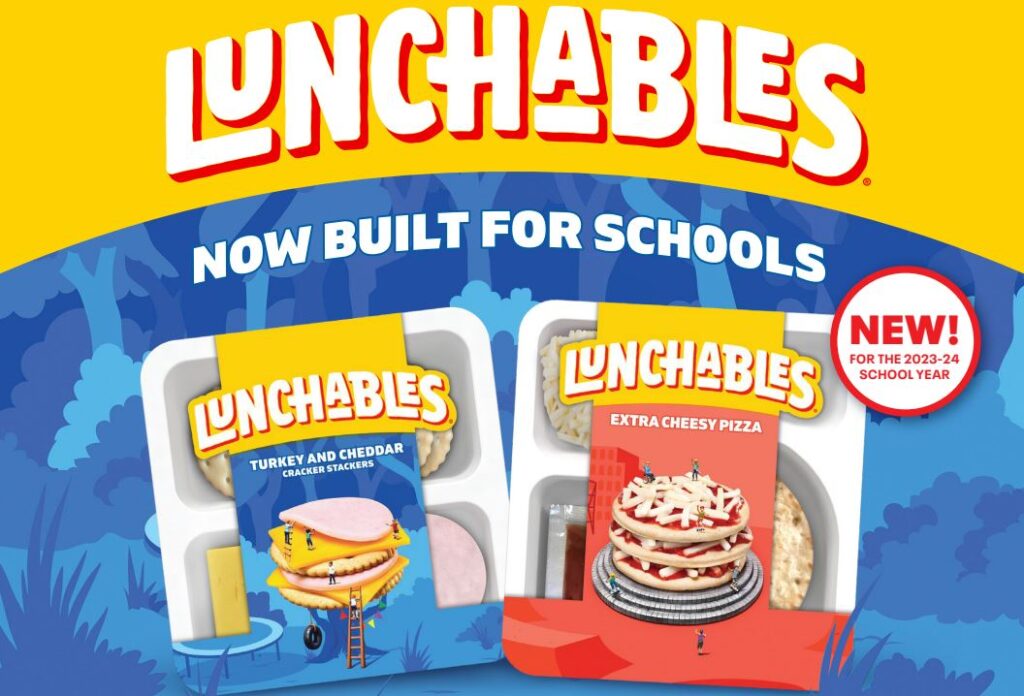Lunchables — the ready-to-eat packaged meals aimed at kids and time-pressed parents — recently became a part of the National School Lunch Program (NSLP) in the coming school year. More specifically, healthier versions of two of its most popular varieties, Turkey and Cheddar and Extra Cheesy Pizza, have been approved to be served in school cafeterias for the first time.
Although Lunchables have been a staple on many cafeteria tables since they were introduced more than 30 years ago, this marks the first time the beloved meals will be sold or made available directly through schools. Kraft Heinz, the owner of Lunchables, said the “built for school” Lunchables will be available nationwide to all school administrators to buy and offer to students for purchase or for free through the NSLP.
The specially formulated Lunchables went through a change of ingredients in order to comply with federal nutrition regulations. The healthier varieties contain two-ounce equivalents of meat/meat alternatives, one ounce equivalent of grain and offer less saturated fats and sodium. However, despite the reformulation, some are skeptical of the nutritional value these Lunchables will bring to the table.
Related: Why Uncrustables Sales Skyrocketed in 2022
The Lunchables approval points to broader issues with federal guidelines, namely the lack of funding toward school cafeterias. The approval means that school cafeterias can rely on pre-made, preservative-filled products like Lunchables that meet NSLP standards rather than scratch cooking healthy, nutritious meals. But offering pre-packaged foods like Lunchables might be welcome in some school districts that are struggling with higher food costs and labor shortages.
In terms of their nutrition, the Turkey and Cheddar Lunchables, which includes crackers, turkey and cheddar slices, contains 270 calories, 15 grams of fat, 16 grams of protein and 930 mg of sodium. Meanwhile the Extra Cheesy Pizza variety, which includes pizza crusts, marinara sauce and shredded cheese, contains 330 calories, 13 grams of fat, 16 grams of protein and 700 mg of sodium.
It is recommended that children between the ages of four and eight consume no more than 1,500 mg of sodium per day, while children between the ages of nine and 14 should consume no more than 1,800 mg of sodium per day. While these nutritional values technically fall within guidelines, the new Lunchables, depending on the variety, take up half or more of the recommended sodium intake per day for children.
However, Lunchables aren’t the only branded food products that students might encounter in the school cafeteria. Some schools offer cereals from General Mills and Kellogg’s, although much like the new Lunchables, their formulas also are altered from the grocery store versions to contain less sugar and more whole grains.
The rollout comes just after the US Department of Agriculture (USDA), which administers the NSLP, announced it would impose new guidelines over the next several years that will further limit sodium, emphasize whole grains and restrict sugar. These proposed changes come as childhood obesity rates have become a serious problem, according to the Center for Disease Control and Prevention (CDC).












Join or login to leave a comment
JOIN LOGIN